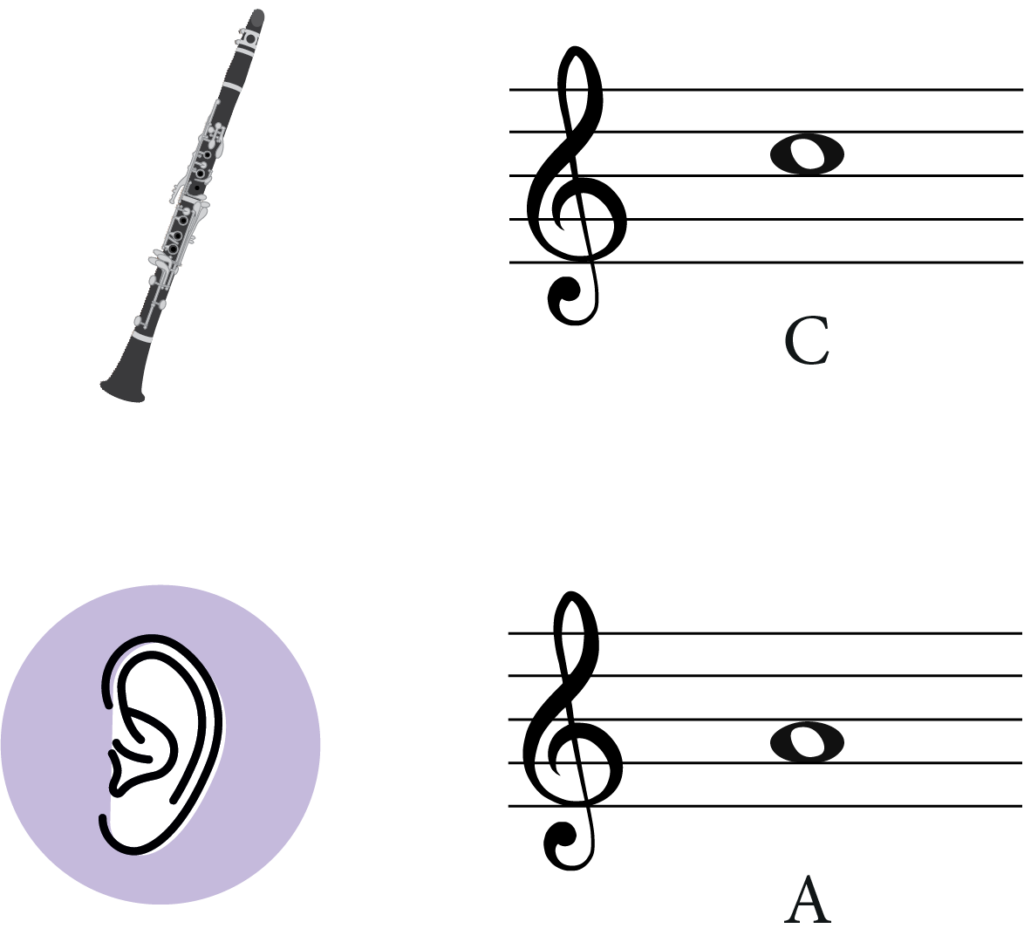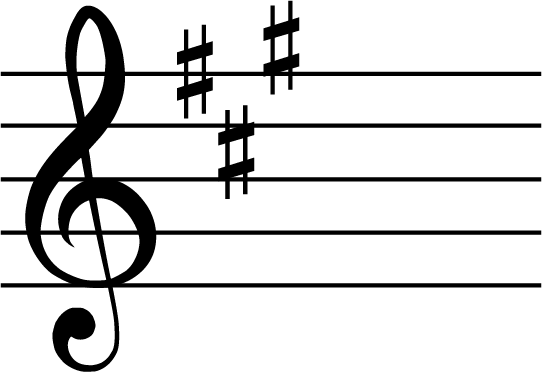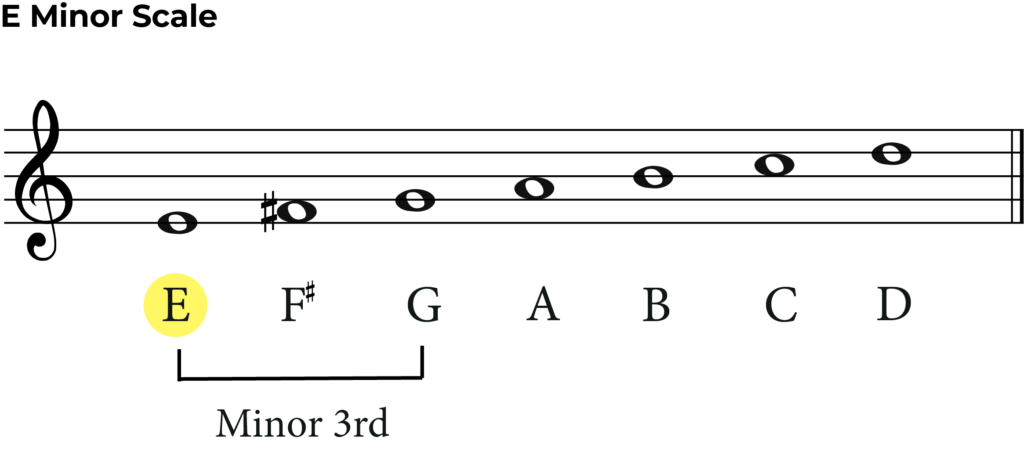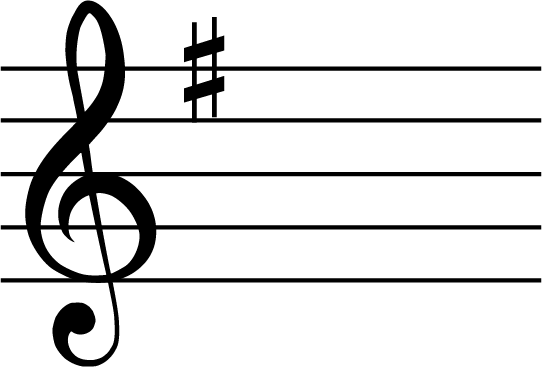Transposition is essential skill for any aspiring musician. At their heart of it, transposition allows you to alter music so that it can be played on different instruments or in different ranges of pitch.
So let’s take a dive into how to transpose down a minor 3rd. This is both for music theory students and for musicians seeking to understand the concept of transposition.
Need to transpose using another interval; check out all our transposition guides here.
What Is A Minor 3rd?
A minor 3rd interval is created when we move from the 1st degree of the minor scale to the 3rd degree to the scale. This interval is called a ‘minor’ third because it is the 3rd note of the minor scale. This would also be the same as a major 3rd that was lowered a half-step.
Another way of thinking about a minor 3rd is that it is 3 half-steps below the higher note.

It’s worth remembering that 2nd, 6th and 7th intervals can also be major or minor, whereas 4th and 5th intervals are described as ‘perfect’.
Why transpose Down a minor 3rd?
When transposing a minor 3rd we are thinking about instruments in the key of A. The most common instrument we think of in A is the Clarinet in A!
If we say that an instrument is ‘in the key of A’ this means that when the instrument plays a ‘C’, the audience will hear an ‘A’. So, for example, if a Clarinet in A is playing a piece written in the key of C major (no sharps or flats) we will hear the piece in the key of A major (3 sharps)!
It is important to learn how to move between written pitch (the notes that the performer sees on the music) and concert pitch (what we, the listener, will hear).
So if we want to move from written pitch to concert pitch, we will need to transpose DOWN a minor 3rd. You could use this to write parts for other instruments and know that it will be in the same key as the clarinet.

How To Transpose Down A Minor 3rd
This method has three steps:
- Transpose the key signature down a Minor 3rd
- Move all the notes down a 3rd
- Deal with the accidentals
(If you thought we could transpose each note one at a time, click here to see why NOT to do this)
Let’s try an example. Have a look at the melody below and let’s see how to transpose down a minor 3rd.

Step 1- Transpose The Key Signature
First, let’s transpose the key signature. Our melody is the key of C major, so what is a minor 3rd below C natural?

As you can see above, a minor 3rd below C is A natural. This is because C natural the 3rd note of the A minor scale. Or we could say that A is 3 half-steps below C. This means that we now need to put the key signature of A major at the start of our melody.
Important: It is crucial to remember that even we are going to transpose down a minor 3rd, the piece will still move to another major key signature. Pieces do not change from major to minor (of the other way around) when we transpose them.
The key signature of A major has three sharps: F#, C# and G#.

Here it is in our melody.

- If you are unclear on your key signatures, please make sure you are familiar with your Circle of Fifths.
Step 2- Move The Notes Down A 3rd
Once you have changed your key signature, we then need to follow this with moving all the notes in the melody down a 3rd. As with all intervals we include the starting note, so effectively this means moving the notes down twice.

And we have our transposed melody! Below is the original melody with the tranposition underneath.

There are no accidentals in this melody so no need for step 3 this time.
Example 2
What key is our melody in below?

You could say this melody is in B flat major, but the F sharp makes it G Minor. That is because G, A, Bb, C, D, Eb and F# is the G harmonic minor scale. By treating it as a piece in a minor key, it also gives us the chance to practise transposing in a minor key.
Step 1- Transpose The Key Signature
First let’s transpose the key signature. Can you transpose down a minor 3rd from G?

By counting a 3rd down from G, we get an E and the E natural minor scale. The 3rd note of the E minor scale scale is G. This means we now need the key signature of E minor. E minor has one sharp – F#. (Remember: the original melody was in G Minor, so the new key must be a minor key too. In this example it is E Minor).

Here is the new key signature at the start of our melody.

Step 2- Move The Notes Up A 3rd
Now we have changed the key signature, simply move all of your notes up a 3rd.

As you can see, we have not moved the F sharp note yet. This is because it is not in the notes of the original key signature and so will need to be treated differently.
Step 3- Accidentals
In our original melody we have a F#. This note is not in the G natural minor scale and so it will not be transposed correctly by the first 2 steps.
To transpose down a minor 3rd, this note must be treated on its own. We can ask: what is a minor 3rd below F#? We could couldn’t down 3 half-steps from F# and this would give us D#
Here is the final transposition alongside the original melody.

Suppose we didn’t want to count down from the F#, is there another way to transpose this note down a minor 3rd?
Another simple method would be to lower the F# a half-step to an F. Finding a minor 3rd below F is much easier: it is D. (This is because D natural is the 3rd note of F minor).
Now all we have to do it raise the D up a half-step to correct it to D sharp.

Can We Transpose One Note At A Time?
This is the slowest method of transposing, but it works! Here we are going to move each note down a minor 3rd interval to create our transposed melody.

Remember that for each different note we need to count down a 3rd in a different key. Because of this it can be way easier to make mistakes. You will also need to look at your notes to figure out the key signature for your new melody, otherwise you may have a lot of accidentals to read!
What’s Next….?
- Learn how to transpose UP a minor 3rd.
- Learn how to transpose by another interval.
- Learn more about intervals with our complete guide.
FAQs
How Can I Transpose Sheet Music Up A Minor 3rd Automatically?
There are a variety of apps that can transpose sheet music such as Sibelius and Musescore.
What Is a Minor 3rd: A more in-depth explanation
As you know from your theory education, our intervals always have a descriptive word. We won’t go into this too much today but just as a brief overview, our intervals can be described as major, minor or perfect (there are more descriptions but watch out for more blog posts coming soon to help you to understand intervals further…! This is not necessary for our transposition).
When naming an interval, we always start with the note with the lowest pitch, which in this case is an A. If you look at the piano above, A is below C. The notes on the piano are lower to the left and higher to the right!
Below is the scale of A Major.

Is our upper note (C natural) in the key of A major?
As you can see the note C natural is NOT in the key of A major, meaning that this is NOT a major interval.
But what type of C is in A major? Take a look at the scale above… it is a C sharp!
So, is C natural higher or lower than C sharp? (remember the notes on the piano are lower to the left and higher to the right!)

That’s correct, the C natural is lower than the C sharp…
One semitone lower to be exact…
Making this interval a minor third!
That’s a lot of steps… is there a simpler way?
We could make this even easier. In a minor scale the third is always a minor 3rd. So if we write out the A minor scale…

We can see that the 3rd note is a C natural, meaning this is straight away a minor 3rd!
If using this method, make sure you are really confident with your minor scale key signatures. Be sure to revise your circle of fifths!!
